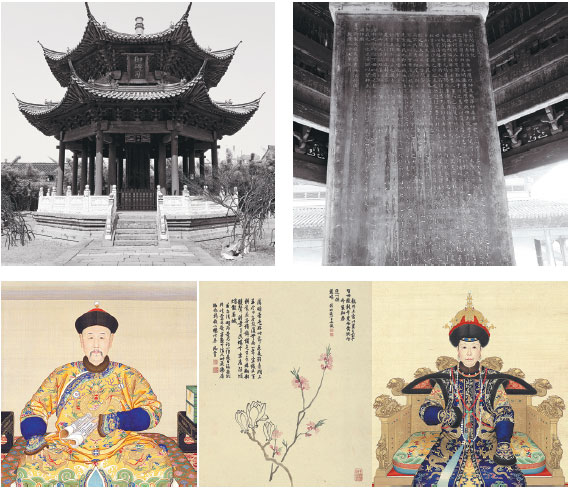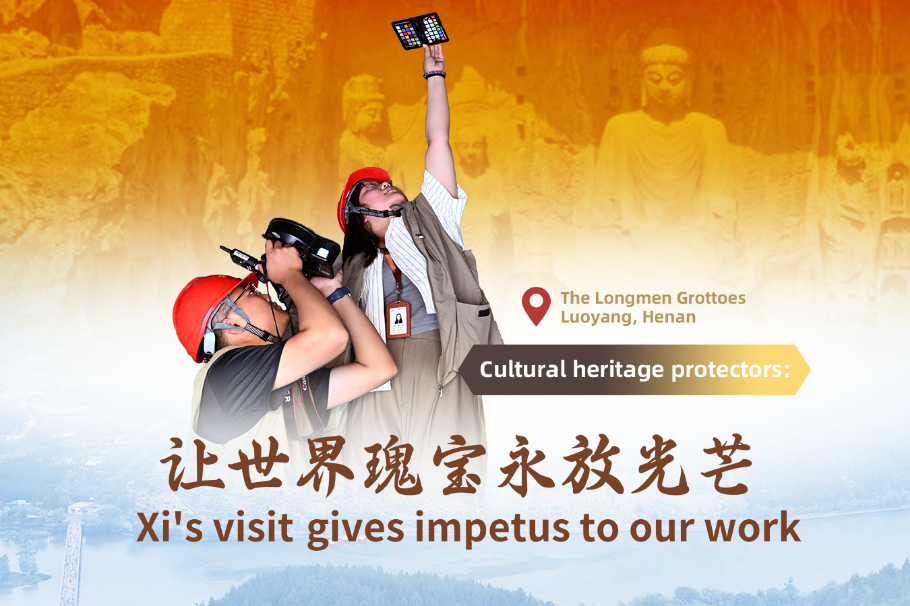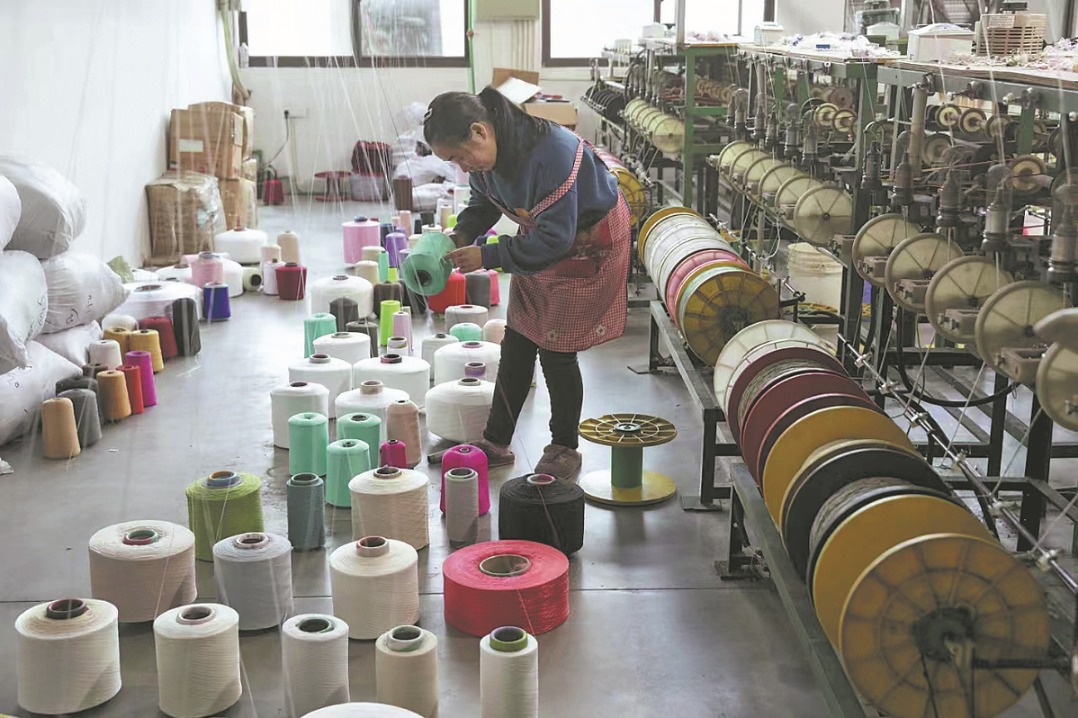A royal heir shows both diligence and deference

During Emperor Qianlong's 60 years on the throne he looked to his mother, his deceased father and to his grandfather as guiding lights
Emperor Qianlong was unlike most emperors in Chinese history - in particular his father, Emperor Yong Zheng, who had to wait 44 years before ascending to the throne, and faced bitter political struggles that ended in the deaths of at least one of his brothers.
For Qianlong, the road to power could not have been smoother. When he was 12, he met his grandfather, the revered Emperor Kangxi, for the first time. (Little surprise there, given that Kangxi had 24 adult sons and 97 grandsons.) Endearing himself with the old man through a composed disposition rare in a teenage boy, Qianlong, by then known as Hongli, became the de facto crown prince after the coronation of his father, Emperor Yongzheng.
(Qianlong was his reign title. His birth name was Hongli Aisin-gioro, with Aisin-gioro being the royal family's surname.)
| Clockwise from top left: The temple dedicated to the water god in Haining county, Zhejiang province; a stone stele in the temple, inscribed with articles written by Emperor Qianlong and his father, Emperor Yongzheng, both dealing with levee construction; Empress Xiaoshengxian, mother of Qianlong; Qianlong's flower painting, which was given to his mother as a gift; Emperor Yongzheng. Photos Provided to China Daily |
Yongzheng who was on the throne for 13 years, died at age 57. Qianlong succeeded him, with absolutely no opposition. His mother, who had been one of Yongzheng's low-level concubines, became the king mother, the country's most powerful woman.
The exhibition at the Zhejiang Museum closely examines Qianlong's six trips to southeastern China and sheds warm light on the relationships between members of the royal family - relationships often marked by tension rather than tenderness.
In fact, the trips were possible mainly because of the empress dowager, at least according to Emperor Qianlong.
"In 1750, the year before Qianlong's first trip to Jiangnan, he talked in public about his costly decision, giving four reasons, one of them being to fulfill his filial duty," says Ma Shengnan of the Palace Museum in Beijing.
"Qianlong defined his reign as 'rule with filial piety'. For 41 years, between his ascension to the throne in 1736 and his mother's death in 1777, he acted out his role as a son diligently and wholeheartedly."
An exhibition currently at the Zhejiang Museum in Hangzhou - organized in conjunction with the Palace Museum - offers a glimpse into the mother-son relationship. On display is a painting by the emperor himself, depicting magnolias and peach blossoms. The images are simple and the colors quiet. A few lines penned by the emperor on the upper right side say the painting was done during his tour of Longjing in Hangzhou, capital of what is now Zhejiang province.
"Mother saw it and loved it. So I have had it mounted for her," Qianlong wrote. That was in 1762, during his third trip south - a trip the empress dowager made with him.
The emperor also tried to memorize the deeds of his father, Emperor Yongzheng - or to emulate them in his own way. Yongzheng, who is today regarded as the hardest-working Qing emperor, seems to have made "All work and no play" his personal motto, sleeping no more than five hours a day, according to the official record.
Yongzheng, like his father Emperor Kangxi, paid great attention to the building of levees along the Qiantang River that runs through Hangzhou. But it was only during the late reign of Qianlong that the nagging issue was put to rest.
Also during that third trip in 1762, Qianlong wrote a long article offering his own thoughts on building levees, based on field trips. Later he ordered the inscription of his article on a stone stele standing in a temple dedicated to the water god in Haining county, about 60 kilometers from Hangzhou.
"By that time, the other side of the stele bore another inscription - an article penned by Emperor Yongzheng, also about building levees," Le says.
Today the stele is still there, with the writing on both sides telling a story of continuous effort and lasting memory.
However, no one could take the place of Emperor Kangxi, the grandfather who, after seeing Qianlong for the first time, decided to take the boy away and put him under his tutelage - a tutelage widely interpreted as an initiation into future kinghood. Kangxi died in 1722, eight months after seeing Qianlong for the first time in March that year.
Kangxi was 67 when he died, after having been emperor for more than 60 years. His grandson Qianlong enjoyed a much longer life, dying when he was 88. However, in a rare gesture to pay tribute to his grandfather, Qianlong abdicated three years before his death, in 1796, after being on the throne for exactly 60 years.
"What is not so well known is that Qianlong traveled to southeastern China six times and no more, possibly because Emperor Kangxi had been there six times," Le says.
"It seems that Qianlong decided he was not going to surpass his grandfather in any controllable aspect. He had taken upon himself to make Kangxi the greatest emperor in Chinese history."
Sometimes the journey seemed to be ruined, at least in part. Qianlong's fourth trip in 1765 saw the emperor becoming angry with his empress. The unfortunate woman, who was made an empress three years after the death of Qianlong's first wife, fell out of his favor once and for all and was sent back to Beijing that very day as the emperor and his entourage journeyed on. The empress died the next year, followed by her son 10 years later.
No official record recounts what happened. Qianlong blamed the empress for "cutting her hair and breaking a national taboo". But for what? No one knew exactly. A widespread rumor was that the empress alienated herself from her husband by trying to stop him from engaging in more romance on the road. This was never verified, of course.
The empress dowager died in 1777, after having accompanied her son four times during his southern journeys. For the last two trips, in 1780 and 1784, the emperor was alone, without the mother whose death he mourned for the rest of his life, and without the wife he never forgave. Of course there were many concubines but none claimed a place in the emperor's heart in the way his mother and first wife did.
During his sixth and final trip, the 73-year-old Qianlong wrote: "My travel ends here. Everything I am experiencing today will be memories for tomorrow."
(China Daily Africa Weekly 09/22/2017 page16)
Today's Top News
- Ukraine crisis a lesson for the West
- Autonomous networks driving the progress of telecom sector
- China launches cargo drone able to haul up to 1.2 tons
- Key role of Sino-German ties stressed
- Tariffs hurt global trade: Experts
- Rescuers race against time to find survivors































